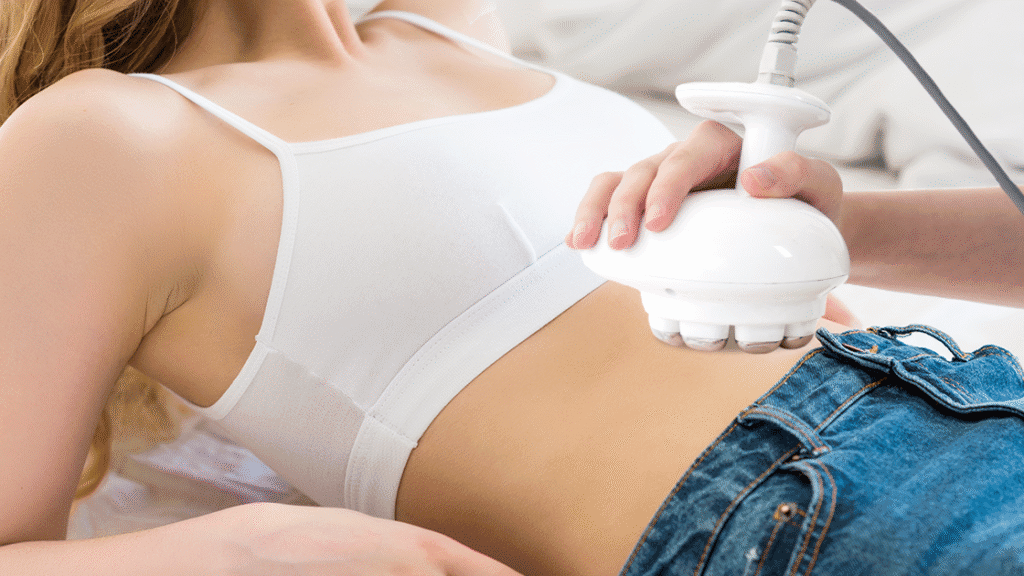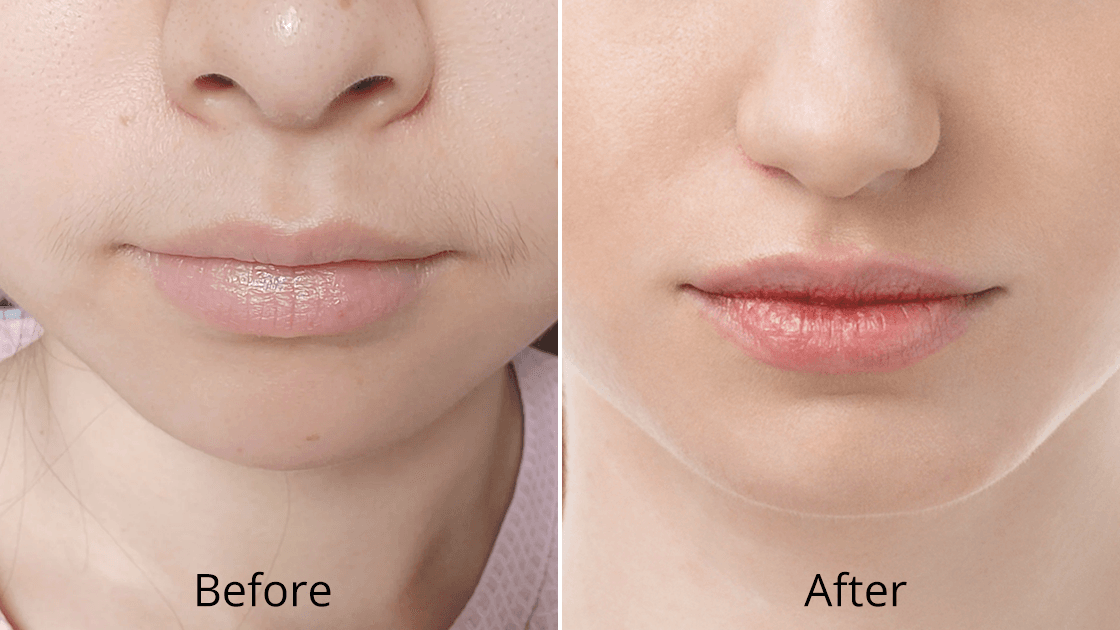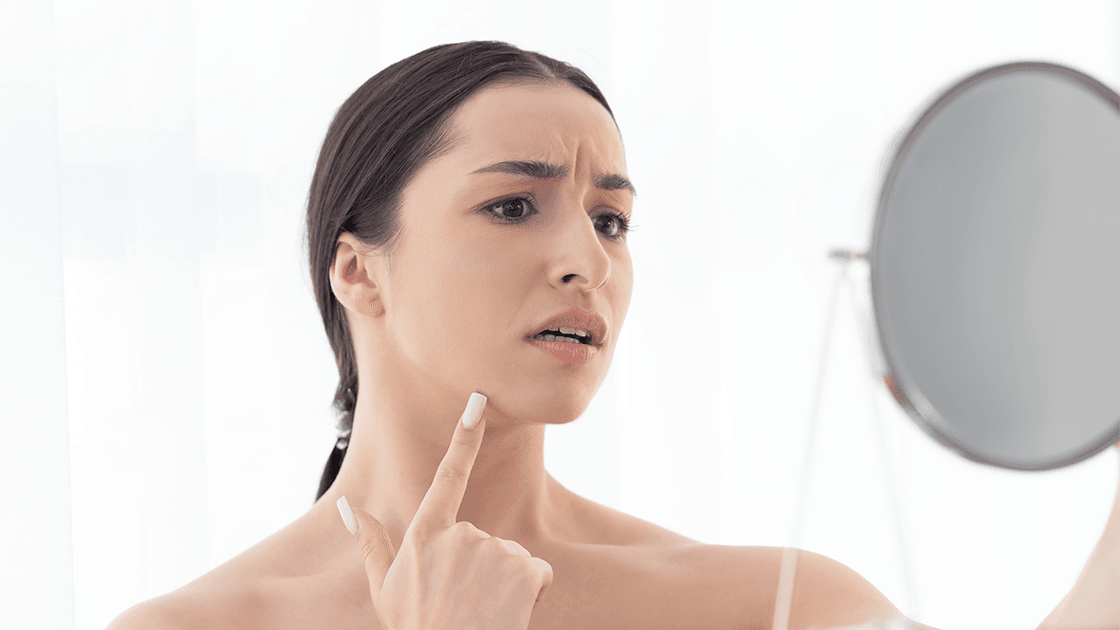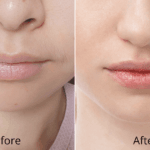1. Introduction: Why You’re Considering Radiofrequency for Cellulite
If you’ve noticed the dimpled appearance of cellulite on your thighs, buttocks, or other areas, you’re not alone—cellulite affects up to 98% of women after puberty. Many are turning to non-invasive treatments that promise smoother skin without the risks or downtime of surgery. Radiofrequency (RF) has become a popular choice, offering a non-surgical, in-office approach that delivers controlled thermal energy to targeted tissue layers. This energy may help address structural factors that contribute to cellulite, potentially improving skin texture and firmness. With so many treatment options and claims about effectiveness, it’s important to understand what RF can—and cannot—do. This guide will explain how cellulite forms, examine the evidence behind RF treatments, compare alternatives, and provide practical tips, helping you decide whether radiofrequency aligns with your goals, expectations, and budget.
2. Understanding Your Cellulite: What It Is and Why It Happens
Before diving into treatment options, it’s essential to understand the complex anatomical and physiological factors that contribute to cellulite formation. This knowledge will help you better evaluate whether radiofrequency treatments address the root causes of your specific cellulite concerns and set realistic expectations for potential outcomes.
2.1 What Cellulite Really Is: The Science Explained Simply
Cellulite is primarily a structural issue involving fat cells, connective tissue, and skin. Its dimpled “orange peel” or “cottage cheese” appearance results from fibrous bands, called septae, which tether the dermis to underlying fascia, creating a mattress-like effect. Unlike common belief, cellulite isn’t simply excess fat—it’s the interaction of anatomy, hormones, genetics, and aging. In women, septae run perpendicular to the skin, allowing fat lobules to push upward when bands thicken or contract. In men, septae run diagonally, containing fat more effectively, which is why cellulite is mostly a female concern. The subcutaneous layer contains fat lobules separated by septae, and when these bands lose elasticity or tighten, they pull the skin down while fat pushes up, creating dimples. Factors like hormonal changes, genetic predisposition, lifestyle, and age-related declines in collagen and skin elasticity all contribute to cellulite formation.
2.2 Are You at Risk? How Age, Body Type, and Lifestyle Affect Cellulite
Understanding your personal risk factors helps set realistic expectations for cellulite treatments. Gender is the primary factor—women are far more susceptible due to differences in fat distribution, connective tissue, and hormonal influences. Estrogen affects collagen production, fat storage, and circulation, contributing to cellulite development. Age also plays a key role. As skin loses elasticity and thickness, collagen and elastin decrease, reducing the skin’s ability to smooth over underlying structural irregularities. Metabolic and fat distribution changes with aging can further affect connective tissue integrity. Genetics influence susceptibility by determining skin thickness, elasticity, fat patterns, and circulatory efficiency. Lifestyle can impact cellulite’s appearance but is rarely the main cause. Sedentary habits, poor nutrition, and dehydration can worsen dimpling by reducing circulation, muscle tone, and skin quality. Still, even fit and healthy individuals may develop cellulite due to factors beyond their control, including genetics and hormones.
2.3 Common Myths About Cellulite That Might Be Holding You Back
Dispelling myths about cellulite is key to making informed treatment decisions. A common misconception is that cellulite is simply excess fat that can be eliminated through diet and exercise. While maintaining a healthy weight may improve its appearance, clinical evidence shows that fibrous septae—connective tissue bands beneath the skin—play a central role, making cellulite primarily a structural issue rather than just fat. Another myth is that only overweight individuals develop cellulite. In reality, it affects all body types, including athletes and people with very low body fat. Genetic factors, septae thickness, and reduced skin elasticity can make cellulite visible even in thin individuals, highlighting that fat-targeted approaches alone may be insufficient. Topical creams are often believed to significantly reduce cellulite, but they only offer temporary surface improvements and cannot address deep structural issues. This explains why treatments like radiofrequency, which reach deeper tissue layers, may provide more noticeable and lasting results.
3. Considering Radiofrequency Treatments: What You Need to Know
Radiofrequency treatments represent a significant advancement in non-invasive aesthetic medicine, offering targeted thermal energy delivery that can address multiple aspects of cellulite pathophysiology. Understanding how these treatments work, what they can achieve, and their limitations is essential for making informed decisions about your cellulite management strategy.
3.1 How Radiofrequency Smooths Skin: A Simple Explanation
Radiofrequency (RF) works by delivering controlled electromagnetic energy that penetrates the skin, generating targeted heat in tissues. This thermal effect, usually between 40–45°C (104–113°F), helps improve cellulite by loosening fibrous bands, reducing fat cell prominence, and enhancing skin texture. The heat triggers biological responses that can smooth the skin. Collagen fibers contract and remodel, softening and reorganizing the septae responsible for dimpling. RF also stimulates neocollagenesis, forming new collagen that improves skin thickness, elasticity, and overall texture over time. Additionally, heating can enhance local circulation and lymphatic drainage, potentially reducing fluid retention that accentuates cellulite. Modern RF systems vary in depth and coverage. Monopolar systems penetrate deeply for larger areas, bipolar systems provide precise, localized heating, and multipolar systems combine multiple electrodes for uniform heating and can be paired with modalities like vacuum massage or infrared light. System choice depends on treatment goals and the depth of tissue targeted.

3.2 The Benefits You’ll Notice: What Makes RF a Popular Choice
Radiofrequency (RF) treatments are popular not only because they are non-invasive but also due to multiple benefits for cellulite and skin quality. One key advantage is gradual improvement in skin texture and firmness over weeks to months, as RF stimulates ongoing biological processes like collagen remodeling and elastin production. This dual effect targets structural causes of cellulite while enhancing overall skin elasticity and smoothness. Patients often notice reduced dimpling, tighter skin, and a more even surface. RF can treat multiple areas in one session, such as thighs, buttocks, abdomen, and arms, making it efficient for full-body improvement. Convenience also contributes to RF’s popularity. Sessions are quick, require no anesthesia, and involve minimal to no downtime, allowing patients to resume daily activities immediately. Temporary redness or warmth may occur, but the overall accessibility and low disruption make RF an attractive choice for busy individuals seeking effective, non-surgical cellulite solutions.
3.3 What an RF Session Feels Like: Pain, Comfort, and Duration
Knowing what to expect during an RF session can help you feel more at ease. Most patients describe a warm, deep heating sensation that is generally well-tolerated and often relaxing. A coupling gel is applied first to ensure smooth device movement and optimal energy transfer, sometimes including cooling agents for added comfort. The RF device is moved systematically over the treatment area in overlapping passes, with modern devices monitoring temperature to maintain therapeutic levels without overheating. The sensation often resembles a hot stone massage or warm compress, with gradual warming followed by brief cooling as the device moves. Sessions typically last 30–60 minutes, depending on area size—smaller areas like arms or lower abdomen may take 20–30 minutes, while larger areas like thighs or buttocks may require 45–60 minutes. Mild redness, warmth, or swelling is common but usually subsides within a few hours. Practitioners adjust settings to ensure comfort throughout.
3.4 What RF Can’t Do: Realistic Results You Should Expect
While RF treatments can improve the appearance of cellulite, they have limitations. RF cannot completely eliminate the structural factors behind cellulite, and results vary based on skin type, cellulite severity, age, and genetics. Most patients can expect modest to moderate improvement rather than dramatic transformation. Clinical evidence shows that RF is more effective when combined with treatments targeting deeper structural components, rather than as a standalone solution. Patients with mild to moderate cellulite typically see better results than those with severe, long-standing cellulite or significant skin laxity. RF also cannot replace healthy lifestyle habits or prevent factors like weight fluctuations, hormonal changes, or aging from influencing cellulite. Maintenance sessions are necessary to sustain results, as the underlying biological processes continue after treatment. Understanding these limitations helps set realistic expectations, ensuring patients are satisfied with achievable improvements rather than expecting complete elimination.
4. Evidence You Can Trust: Does RF Actually Work for Cellulite?
Evaluating the clinical evidence for radiofrequency cellulite treatments is essential for making informed decisions about this investment in your appearance and well-being. While RF technology shows promise, understanding the quality and limitations of available research helps set appropriate expectations and identify the most effective treatment protocols.
4.1 What Clinical Studies Say About Effectiveness
Research suggests that radiofrequency (RF) can improve cellulite, with multiple trials exploring different devices and protocols. RF systems work through electrothermal and subcutaneous effects, which are supported by scientific evidence. Still, the quality and scope of studies vary, so results should be interpreted carefully. Clinical trials, particularly with multipolar RF combined with pulsed magnetic field therapy, report measurable improvements in cellulite severity, skin texture, and patient satisfaction. Many participants notice visible skin smoothing and reduced dimpling after treatment. However, most studies involve small sample sizes and short-term follow-ups, leaving questions about long-term durability unanswered. Objective monitoring plays an important role in evaluating RF outcomes. Imaging methods like ultrasound and MRI have shown measurable tissue changes, including increased skin thickness, improved fat distribution, and alterations in fibrous septae. These findings support the potential benefits of RF but also highlight the need for more robust studies to confirm long-term effectiveness and consistency.
4.2 Expert Opinions: Dermatologists and Aesthetic Specialists Weigh In
Dermatologists and aesthetic specialists generally recognize radiofrequency (RF) as a valuable cellulite treatment, though they stress realistic expectations. Experts agree RF improves skin texture and cellulite appearance but rarely eliminates it completely. Many emphasize its role as part of a broader plan addressing multiple causes of cellulite. Specialists often recommend RF for patients seeking non-invasive options who accept the need for multiple sessions and maintenance. Outcomes are typically best in individuals with mild to moderate cellulite and good skin elasticity, while those with severe cellulite or loose skin may benefit more from combination approaches. Some experts pair RF with acoustic wave therapy, vacuum massage, or minimally invasive methods to enhance results. Practitioner expertise is considered critical. Successful outcomes rely on correct settings, proper technique, and systematic treatment coverage. Many experts advise choosing board-certified dermatologists or plastic surgeons with training in body contouring to ensure safe, personalized, and effective care.
4.3 Real Results: What Users Report After Treatment
Patient reviews and surveys provide insight into how RF cellulite treatments perform in real life. Most patients notice gradual improvements in skin texture and firmness over several weeks, with best results usually visible 2–3 months after completing a treatment series. Many describe increased confidence in their appearance, even without full cellulite removal. Studies show that combined RF procedures, such as TPE+RF, often achieve higher satisfaction by addressing both cellulite and skin laxity. Patients commonly report skin feeling firmer, smoother, and healthier overall, extending beyond cellulite reduction alone. At the same time, experiences highlight the importance of realistic expectations. Some patients report underwhelming results when protocols were insufficient or expectations too high. Many note that maintenance sessions are essential to preserve benefits, representing an ongoing time and financial commitment. The most satisfied patients are typically those who understood RF as a supportive treatment within a broader, long-term body confidence plan.
4.4 How to Interpret Before-and-After Results Safely
Before-and-after photos and testimonials can be helpful, but they must be viewed critically. Lighting, posing, skin tension, and camera angles can greatly alter how cellulite appears, sometimes exaggerating results. Reliable providers present photos under consistent lighting, with similar poses and intervals after treatment. Be cautious of images showing dramatic or total cellulite elimination—these may involve editing, selective cases, or unrealistic outcomes. More trustworthy results usually show modest to moderate improvement, which better aligns with clinical evidence. Asking to review a broader gallery or even speak with past patients can provide a more accurate sense of typical outcomes. When considering a provider, ask about their direct experience with RF cellulite treatments, their average patient results, and how they set expectations. Ethical practitioners are transparent about limitations, avoid promising perfection, and explain protocols clearly. Keep in mind that your own results depend on anatomy, cellulite severity, and how your body responds to treatment.
5. Comparing Your Options: RF vs Other Cellulite Treatments
The cellulite treatment landscape offers numerous options ranging from topical creams to surgical procedures, each with distinct mechanisms of action, effectiveness profiles, and considerations. Understanding how radiofrequency compares to other available treatments helps you make informed decisions based on your specific needs, preferences, and resources.
5.1 Non-Invasive Alternatives: Laser, Ultrasound, and Cryolipolysis
Research shows that lasers, ultrasound, and cryolipolysis offer additional non-invasive options for cellulite reduction, often with good safety profiles. Some evidence suggests acoustic wave therapy, subcision, or minimally invasive lasers may produce stronger results than radiofrequency (RF), particularly when structural causes dominate. Laser treatments work similarly to RF, delivering thermal energy to remodel collagen and soften fibrous septae. External laser procedures provide effects comparable to RF, though some patients respond better to specific wavelengths. Minimally invasive laser fiber techniques directly release septae for more dramatic outcomes but require anesthesia and some downtime. Acoustic wave therapy uses mechanical pressure waves to disrupt fibrous septae and enhance circulation. Some studies indicate it may outperform RF in cases where fibrous tissue plays the primary role. Cryolipolysis, or fat freezing, can reduce localized fat bulges but has limited impact on structural cellulite, making it less effective as a stand-alone option.
5.2 Minimally Invasive and Surgical Treatments
For patients seeking more dramatic results, minimally invasive and surgical approaches offer stronger cellulite improvement. Subcision uses small cannulas to sever fibrous septae tethering the skin, smoothing dimples and often giving longer-lasting results than non-invasive treatments. It requires local anesthesia and short recovery. Minimally invasive lasers like Cellulaze insert laser fibers beneath the skin to release septae, stimulate collagen, and reduce fat. These procedures produce more dramatic and lasting changes but involve higher cost, discomfort, and recovery from days to weeks. Surgical options, including liposuction or combined fat removal with tissue tightening, represent the most aggressive interventions. While they can reshape body contour, they may not directly treat cellulite dimpling and, if poorly performed, can worsen it. Surgical methods carry the highest risks, costs, and downtime but may suit patients with excess fat or skin laxity alongside cellulite concerns.
5.3 Making the Right Choice for Your Goals: Effectiveness, Cost, and Recovery
Choosing the right cellulite treatment depends on goals, budget, recovery tolerance, and risk. RF treatments sit in the middle—more effective than creams but less dramatic than invasive procedures—making them attractive for patients wanting visible yet low-risk results. Cost is an important factor. While RF sessions are individually cheaper than minimally invasive options, the need for multiple initial sessions and ongoing maintenance can make the total investment similar to one-time surgical procedures. Still, RF allows costs to be spread out and stopped if results aren’t satisfactory. RF also excels in recovery and convenience, with no downtime and minimal discomfort—ideal for busy lifestyles. In contrast, more dramatic procedures demand higher risk, cost, and weeks of recovery. Patients should weigh their comfort with risk, time off work, and timeline for visible changes before deciding.
5.4 Combining Treatments with RF for Better Results
Combination therapies often outperform single-modality approaches by addressing multiple cellulite factors. RF plus acoustic wave therapy works well, as RF’s thermal remodeling complements mechanical septae disruption from pressure waves, producing both immediate and long-term benefits. Vacuum massage or lymphatic drainage can further enhance RF by boosting circulation, helping distribute heat more effectively, and aiding waste removal. Some devices already integrate RF with vacuum massage, while separate sessions may also be effective. Topical treatments with caffeine, retinoids, or peptides provide modest support by improving skin tone and sustaining collagen remodeling stimulated by RF, though they cannot replace device-based therapies. Finally, some patients combine RF with lifestyle modifications like exercise or diet. While evidence for exercise-specific cellulite reduction is limited, maintaining overall health can complement the skin-firming and textural improvements achieved through RF treatments.
6. Maximizing Your Results: Lifestyle and Maintenance Tips
Achieving optimal results from radiofrequency cellulite treatments requires more than just showing up for your appointments. The success of your treatment depends significantly on how well you support the biological processes triggered by RF therapy and maintain the improvements achieved through consistent lifestyle practices and appropriate follow-up care.
6.1 Exercise and Nutrition Habits That Support RF Treatment
Exercise alone cannot eliminate cellulite but can enhance RF results by boosting circulation, lymphatic drainage, and skin quality. Regular cardiovascular activity such as walking, cycling, or swimming supports tissue remodeling and removal of byproducts triggered by RF heating. Resistance training, including squats, lunges, and glute exercises, strengthens underlying muscles, providing a firmer foundation that may reduce dimpling. Nutrition also plays a critical role: sufficient protein fuels collagen synthesis stimulated by RF therapy, while vitamin C, zinc, and copper support skin repair. Omega-3 fatty acids help reduce inflammation, and hydration maintains skin plumpness and lymphatic efficiency. Together, balanced fitness and dietary strategies enhance treatment outcomes and help sustain results.

6.2 Skincare and At-Home Care That Helps
Consistent at-home care can help extend RF treatment benefits. Gentle dry brushing before showers and contrast hydrotherapy (alternating hot and cold water) may support circulation and lymphatic drainage, though care should be taken to avoid irritation. Topical products containing retinoids, peptides, or caffeine offer modest complementary effects, helping maintain texture and collagen remodeling, while moisturizers with hyaluronic acid or ceramides improve hydration and skin plumpness. Incorporating self-massage with upward strokes for several minutes weekly promotes circulation, with or without oils; the mechanical action is more impactful than specific ingredients. These simple home practices cannot replace RF technology but can help preserve smoother, firmer-looking skin and prolong improvements over time.
6.3 Staying on Track: Follow-Up Sessions and Long-Term Care
Sustaining RF results typically requires maintenance sessions every 3–6 months, with frequency adjusted as improvements stabilize and depending on age, hormones, lifestyle, and cellulite severity. Tracking progress through consistent photos, notes, or standardized cellulite scales helps patients and providers refine treatment schedules. Long-term outcomes also rely on stable body weight and healthy habits that support connective tissue, as fluctuations can worsen dimpling and reduce treatment longevity. Hormonal shifts from pregnancy, menopause, or therapies may also influence cellulite, requiring adjustments to protocols. Continued communication with providers ensures treatment plans adapt to changing needs, maximizing durability and overall satisfaction with RF therapy.
7. Safety First: Risks, Side Effects, and Who Should Avoid RF
Radiofrequency cellulite treatments are generally safe but carry some risks. Common side effects include temporary redness, warmth, swelling, or mild tenderness, usually resolving within hours to days. Rare but more serious complications may involve pigmentation changes, blistering, or burns, which are minimized with trained practitioners and proper device settings. Pregnant women should avoid RF as safety on fetal development is unstudied. Patients with pacemakers, defibrillators, or implanted devices may require cardiology clearance. Active infections, wounds, or inflammatory skin conditions in treatment areas must heal before treatment. Those with diabetes, autoimmune disorders, or impaired wound healing should consult providers about adjustments. Medications affecting clotting or photosensitivity, as well as recent cosmetic procedures, may also require modified timing. Careful screening and professional supervision ensure the safest outcomes.
8. Conclusion: Is Radiofrequency Right for You?
RF cellulite treatments provide a balance between topical creams and invasive procedures, offering modest to moderate improvement with minimal downtime. They are best suited for patients with mild to moderate cellulite who seek gradual skin smoothing without surgery. Results require realistic expectations, as RF cannot completely eliminate cellulite or produce dramatic transformations. Budgeting for both initial sessions and ongoing maintenance is important since sustained results depend on consistency. Success also relies on lifestyle habits such as stable weight, healthy nutrition, and exercise that support skin health. Ideal candidates are informed patients who understand treatment limitations and commit to follow-up care. A consultation with an experienced dermatologist or plastic surgeon can help determine suitability, expected outcomes, and personalized protocols. Approaching cellulite treatment as a comprehensive strategy—potentially combining RF with other therapies—ensures the best long-term improvements and satisfaction.








